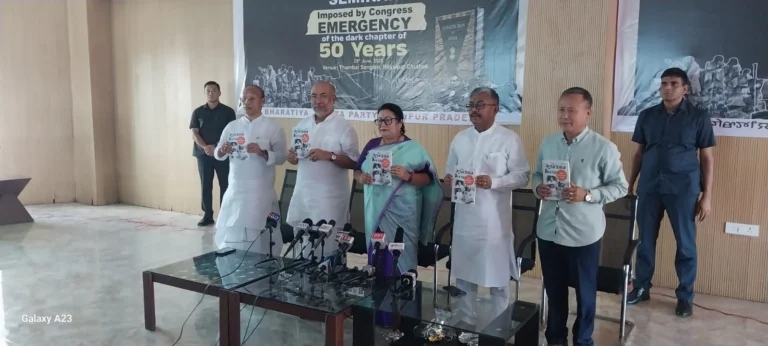Militants Allegedly Using Starlink to Evade Internet Blackouts in Manipur
Summary of the News Article
In the northeastern Indian state of Manipur, insurgent groups are reportedly using Starlink, Elon Musk’s satellite-based internet service, to bypass government-imposed internet blackouts. This issue has raised significant concerns as Starlink operates without requiring local infrastructure, making it difficult to monitor or control. Militant groups are believed to have smuggled the devices from Myanmar, where Starlink is legally permitted, and are leveraging its capabilities to maintain communication during internet shutdowns. The situation highlights the challenges governments face in regulating advanced satellite technology in conflict zones.
How Militants Are Using Starlink to Evade Internet Blackouts: A Deep Dive
Introduction: Technology in the Hands of Insurgents
Imagine a world where even the most remote areas can connect to the internet with just a small satellite dish. Sounds like progress, right? But what if this very technology is used to fuel conflict? That’s precisely what’s happening in Manipur, India. The innovative Starlink service, designed to bridge the digital divide, is now reportedly being used by militants to stay connected despite government-imposed internet shutdowns.
What Is Starlink, and Why Is It a Big Deal?
Starlink is a satellite-based internet service developed by Elon Musk’s SpaceX. Unlike traditional internet that relies on ground-based infrastructure like cables and towers, Starlink uses a network of low Earth orbit (LEO) satellites to deliver high-speed internet. This makes it ideal for remote regions and places where traditional infrastructure is hard to set up.
But here’s the kicker: Starlink doesn’t rely on local infrastructure. That means it’s almost impossible for governments to block or monitor its usage unless they target the satellites directly—a technological feat that’s far from practical.
Manipur: A Region in Conflict
Manipur, located in the northeastern part of India, has been grappling with decades of ethnic tensions and insurgencies. The government frequently resorts to internet shutdowns during periods of unrest to curb the spread of misinformation and disrupt militant communications. However, these shutdowns also leave ordinary citizens disconnected, impacting their access to essential services.
How Militants Are Smuggling and Using Starlink
So, how are militants in Manipur getting their hands on Starlink devices? Reports suggest they’re being smuggled from Myanmar, where the service is legally permitted. Once in possession of these devices, insurgent groups like the People’s Liberation Army (PLA) of Manipur use them to maintain their operations without worrying about internet blackouts.
A senior police official in Manipur recently revealed that Starlink devices have been spotted near the Myanmar border. This raises serious questions about cross-border smuggling networks and the lack of regulatory control over such cutting-edge technology.
The Challenges Posed by Satellite Internet in Conflict Zones
1. Bypassing Traditional Surveillance
Unlike traditional internet services that pass through government-monitored servers, satellite internet operates independently of local networks. This makes it nearly impossible for authorities to monitor or intercept communications.
2. Unregulated Access
Starlink’s availability in neighboring Myanmar complicates matters for India. While the service is officially unlicensed in India, its signals can still penetrate across borders, allowing unauthorized use in conflict-ridden areas like Manipur.
3. Escalating Conflicts
With uninterrupted communication, militant groups can coordinate more effectively, recruit members, and plan attacks. This has the potential to escalate violence and destabilize the region further.
Global Examples: How Starlink Is Used in Other Conflict Zones
Manipur isn’t the first region where Starlink has found its way into conflict zones. Let’s take a look at a couple of examples:
- Ukraine-Russia War
Starlink has been a game-changer for Ukraine, allowing the military and civilians to stay connected during the ongoing conflict with Russia. It has proven invaluable for communication in war-torn areas where traditional infrastructure has been destroyed. - Sudan’s Civil Unrest
In Sudan, Starlink has been used amid government-imposed internet blackouts during periods of civil unrest. This has helped activists and protesters organize but has also raised concerns about misuse.
These examples underline the dual-use nature of satellite internet—it can be a tool for empowerment or disruption, depending on who wields it.
What Can Be Done to Tackle This Issue?
The use of Starlink by insurgent groups presents a unique challenge. Here are a few potential solutions:
1. Strengthening International Cooperation
Governments need to work closely with SpaceX and other satellite internet providers to regulate the use of these services. Licensing agreements and clear guidelines must be established to prevent unauthorized usage.
2. Enhancing Technological Countermeasures
Developing technology to detect and disrupt unauthorized satellite signals is crucial. While this might sound like science fiction, it’s a necessary step in today’s tech-driven conflicts.
3. Updating Regulatory Frameworks
Governments must update their laws to address the complexities introduced by satellite-based internet services. This includes cross-border regulations and penalties for unauthorized usage.
4. Border Security
Since the devices are being smuggled from Myanmar, improving border security and cracking down on smuggling networks is vital to curbing the problem at its source.
Balancing Security and Connectivity
It’s essential to remember that satellite internet isn’t inherently bad. In fact, it holds the potential to revolutionize connectivity in remote and underserved regions. The challenge lies in ensuring that this technology is used responsibly. Denying access to civilians in need isn’t the answer—finding a balance between security and accessibility is.
Conclusion
The use of Starlink by militants in Manipur highlights a pressing issue at the intersection of technology and security. As satellite internet continues to grow in popularity, it’s crucial for governments, tech companies, and international organizations to address its unintended consequences. By doing so, we can harness its potential for good while minimizing its misuse in conflict zones.
FAQs
- Is Starlink available in India?
No, Starlink is not officially licensed for use in India due to security concerns. - Why can’t the government block Starlink signals?
Unlike traditional internet, Starlink operates via satellites, bypassing local infrastructure. This makes it difficult to block or monitor. - How are militants getting Starlink devices?
Reports suggest they’re being smuggled from Myanmar, where the service is legally permitted. - Can Starlink be used for positive purposes in conflict zones?
Absolutely! Starlink has been used for humanitarian purposes, like providing internet in disaster-hit areas. - What measures can be taken to prevent misuse of Starlink?
Strengthening international regulations, enhancing border security, and developing technological countermeasures are key steps.




